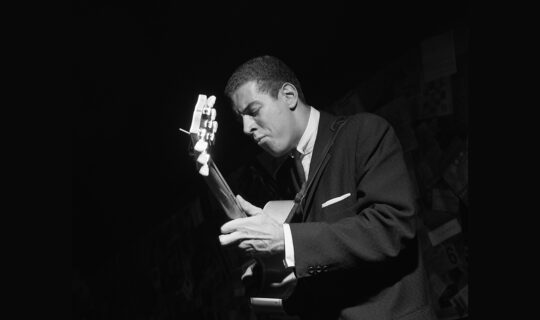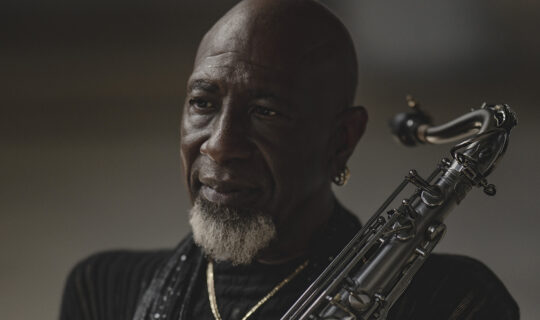January 12, 2013
When saxophonist Ike Quebec died in 1963, Alfred Lion, one of the two founders of Blue Note, was in a tight spot. Quebec had recorded many fine singles and albums for the label and, perhaps more importantly, served as its talent scout, guiding Blue Note into the post-bop era. Lion decided that he needed another musician who could help the label stay fresh stylistically, so pianist Duke Pearson, who had recorded two albums for Blue Note in the late 1950s, Profiles and Tender Feelin’s, both trio dates, came on board as a producer. Probably more than anyone else at the time, Pearson was responsible for fostering the label’s house style, which, on the whole, skewed toward a mixture of hard bop and soul jazz.
Pearson wore many hats as he worked behind the scenes for the label: writer, producer, talent scout. But perhaps more than anything, Pearson was a fabulous arranger, and he put that talent to use throughout the 1960s, working with a wide range of artists from the Blue Note roster.
Pearson had a dark, rich, funky, percussive sound on the piano—he played ballads beautifully—that was similar to Sonny Clark and Horace Silver, who both made excellent trio records for Blue Note in the 1950s. He continued to make more records as a leader, even as he shepherded others’ studio sessions—a pretty wide variety of them, in fact. He recorded some hard bop sessions and a sprightly big band album; he cut some funky tracks, some soulful numbers, and essayed Latin music convincingly; he even made a solid Christmas record.
As a composer, Pearson may be best known for the tune “Christo Redentor,” which he wrote for the trumpeter Donald Byrd‘s 1963 album, A New Perspective; he also arranged the session. It features a dexterous gospel choir, along with Hank Mobley on tenor saxophone, Herbie Hancock on piano, Kenny Burrell on guitar, and a rhythm section of bassist Butch Warren and drummer Lex Humphries.
On I’m Tryin’ To Get Home, released in 1965, another album Pearson arranged for Byrd, there’s a choir again. But this album feels less mysterious, even though it’s good. The title track evokes, for a moment, Horace Silver‘s “Hippy,” an upbeat track from his trademark 1955 release, Horace Silver and the Jazz Messengers.
It’s important to mention Donald Byrd first, though, because Pearson was an expert at writing rich, layered voicings, and with Byrd, he seems to treat the choir like a kind of vocalese horn section. This is an anomaly. On most of the other albums he arranged—including those for Grant Green, Hank Mobley, Stanley Turrentine, Lee Morgan, and Blue Mitchell—it sounds like Pearson is doing a bit of codifying, establishing a sound and a mood that, in a way, reflects his piano style.
Grant Green‘s 1963 release Am I Blue, for example, is a soulful session with some gorgeous ballads, including the title track. It’s a solid soul jazz date, but Pearson does some interesting things with the horns—trumpet and tenor saxophone—making their lines weave around each other, as on the start of “I Wanna Be Loved.”
In the mid-1960s, Pearson quite a bit of arranging for Stanley Turrentine, a tenor saxophonist with a strong blues feel and a sultry disposition. Listen to “And Satisfy,” from Turrentine’s Rough ‘n’ Tumble; you might notice that the funky opening horn arrangement, complemented by a shuffle rhythm, sounds a bit like “The Sidewinder,” Lee Morgan‘s famous composition, released in 1964, that turned into a huge hit. It’s no wonder that others may have sought to replicate it, although Turrentine is one of those special saxophonists, like Stan Getz, Ben Webster and John Coltrane, whose sound you can identify from a single note. Whatever he did, he owned it.
Lee Morgan and Blue Mitchell were also beneficiaries of Pearson’s talents as an arranger. On Morgan’s Standards, recorded in 1967, you get a sense of what Pearson could really do with a horn section. On the ballad “God Bless The Child,” three saxophones are voiced beautifully below Morgan’s delicate phrases. It helps, of course, that Wayne Shorter, James Spaulding and Pepper Adams are playing them. And their embellishments sound orchestral, as though a big band is playing in the background.
On Boss Horn, Blue Mitchell‘s 1967 release, Pearson has a couple more horn players to work with: besides Mitchell, Jerry Dodgion joins in on flute and alto saxophone, along with Junior Cook on tenor, Pepper Adams on baritone and Julian Priester on trombone. Chick Corea shows up on some of the album, too; the musicians play Corea’s tune, “Tones for Joan’s Bones,” and in its airy opening, Pearson once again manages to set up what sounds like a big band.
Pearson was an economical arranger; he could do a lot with a little. In 1967, he worked with Lou Donaldson on the alto saxophonist’s album Lush Life. It’s a record of beautiful ballads. Pearson could arrange for a ballad very well, as you could hear him do in snatches throughout the 1960s, and this album is no exception. Donaldson, accompanied by great musicians like McCoy Tyner, Ron Carter and Freddie Hubbard, sounds lovely; the version of “Stardust” on this album is especially good.
Pearson worked for Blue Note from 1963 until 1970. He went on to teach at Clark College and also toured with the singers Carmen McRae and Joe Williams. In the late 1970s, multiple sclerosis set in and his ability to play piano was vastly diminished. He died in 1980. In a way, he is Blue Note’s holy ghost, shaping some of the label’s best albums every bit as much as the men whose names were on the front covers.
Photos courtesy of Mosaic Images




